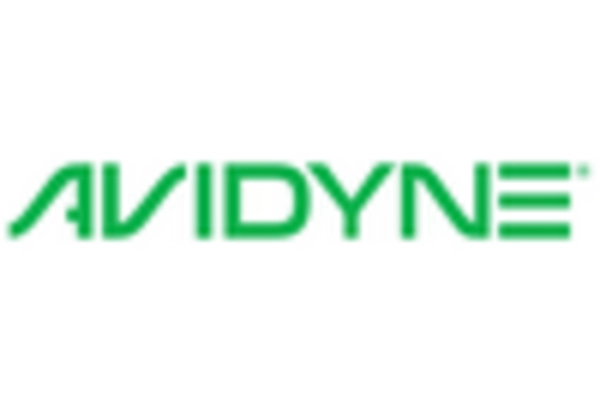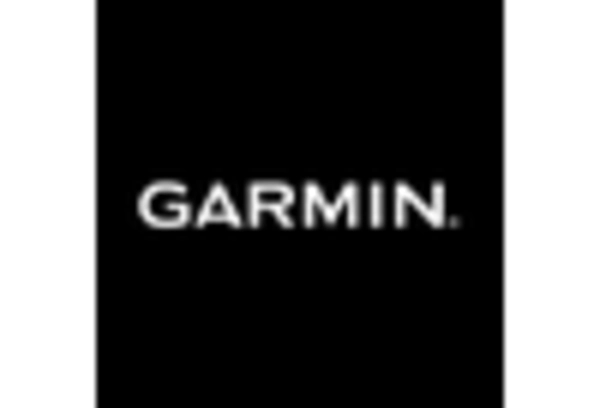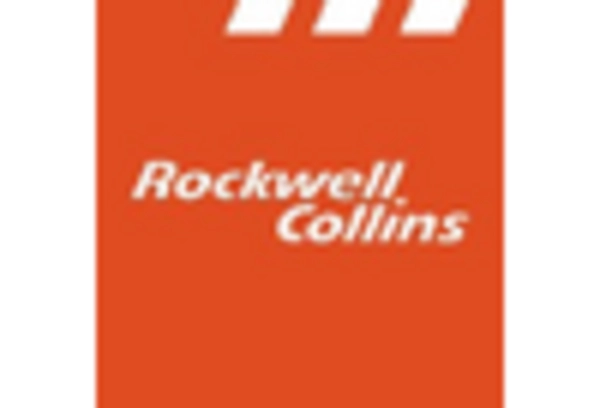Market Analysis
In-depth Analysis of Aviation Beacons Technology Market Industry Landscape
The Aviation Beacons Technology market is influenced by several dynamic forces that collectively shape its trajectory, growth, and innovation within the aviation industry. Regulatory compliance stands as a primary market dynamic. Stringent regulations and safety standards mandated by aviation authorities such as the FAA and international regulatory bodies drive the continuous demand for compliant beacon systems. Adherence to these regulations compels industry players to constantly innovate and develop beacon solutions that meet evolving safety standards, thus driving the market forward.
Technological advancements play a pivotal role in the dynamics of the Aviation Beacons Technology market. The constant evolution from traditional incandescent lighting to more advanced LED-based beacon systems signifies the technological dynamism within the sector. Companies invest heavily in research and development to enhance beacon technology, introducing brighter, more energy-efficient, and durable solutions. This perpetual technological evolution fuels competition, innovation, and the ongoing demand for more efficient and reliable beacon systems.
Another significant dynamic is the integration of smart features into beacon technology. The emergence of smart beacons, equipped with connectivity, remote monitoring capabilities, and data-driven functionalities, represents a transformative shift. These smart systems allow for real-time monitoring, predictive maintenance, and improved operational efficiency, driving the market dynamics towards more sophisticated and proactive beacon solutions that cater to evolving industry needs.
Moreover, the market dynamics of the Aviation Beacons Technology sector are influenced by the industry's infrastructure development and modernization efforts. As airports expand, upgrade, or construct new facilities, there arises a growing demand for advanced beacon systems tailored for diverse infrastructural requirements. Companies strive to develop innovative beacon solutions compatible with modern airport infrastructure, helipads, communication towers, and other aviation-related facilities, driving the market dynamics towards more adaptable and specialized beacon technologies.
The integration of beacon technology into unmanned aerial vehicles (UAVs) represents a dynamic shift within the aviation sector. Drones, increasingly utilized for various commercial and recreational purposes, require effective beacon systems for safe and regulated operations, especially in shared airspace or near restricted zones. This integration drives market dynamics by expanding the scope of beacon technology applications, prompting the development of specialized solutions to meet UAV-specific requirements.
Furthermore, the dynamics of sustainability and environmental considerations significantly impact the Aviation Beacons Technology market. The industry's focus on reducing carbon emissions and adopting sustainable practices propels the adoption of LED-based beacon systems known for their energy efficiency and reduced environmental impact. This dynamic pushes companies to innovate and offer eco-friendly beacon solutions, aligning with industry trends and regulatory priorities towards sustainability.
Additionally, market dynamics are influenced by the competitive landscape and business strategies of industry players. Companies vying for market share position themselves through product differentiation, technological innovation, strategic collaborations, and competitive pricing strategies. The dynamics of competition drive continuous advancements, quality enhancements, and the introduction of more efficient and cost-effective beacon solutions to meet market demands.
In conclusion, the market dynamics of the Aviation Beacons Technology sector encompass regulatory compliance, technological advancements, smart system integration, infrastructure development, UAV integration, sustainability considerations, and competitive dynamics. These dynamics interact to drive innovation, competition, and the ongoing evolution of beacon technology, shaping its role in enhancing safety, navigation, and efficiency within the aviation industry.
Market Trends The Aviation Beacons Technology market is witnessing several trends that are reshaping the landscape of aviation safety, navigation, and infrastructure. A prominent trend in this sector is the evolution from traditional incandescent lighting to more advanced LED-based beacon systems. LED technology offers brighter illumination, energy efficiency, longer lifespans, and reduced maintenance costs. This trend towards LED-based beacons reflects a broader industry push for more efficient and sustainable solutions, aligning with the aviation sector's focus on reducing environmental impact while enhancing performance and reliability.
Technological advancements stand as a key trend driving the Aviation Beacons Technology market. The integration of smart features into beacon systems, including remote monitoring capabilities, predictive maintenance, and data-driven functionalities, is gaining momentum. These advancements allow for more sophisticated and efficient beacon solutions that provide real-time monitoring, improve operational efficiency, and enable proactive maintenance, enhancing overall safety and reducing downtime.
Another significant trend in the Aviation Beacons Technology market is the increasing adoption of beacon solutions in unmanned aerial vehicles (UAVs) or drones. Beacons play a critical role in UAV operations, ensuring safe and regulated flights, especially in shared airspace or near restricted zones. The rise in commercial and recreational drone usage across various sectors is driving the demand for specialized beacon technology compatible with UAV operations, marking a notable trend in the aviation industry.
Additionally, the trend towards infrastructure modernization and expansion within the aviation sector influences beacon technology. As airports undergo upgrades or construct new facilities, the demand for innovative beacon systems grows. This trend drives the development and installation of advanced beacon solutions tailored for airport infrastructure, vertiports, helipads, and communication towers, supporting efficient navigation and safety within these environments.
Integration with smart and connected systems is increasingly becoming a prevalent trend in the Aviation Beacons Technology market. The concept of smart beacons, equipped with connectivity features and capable of exchanging data with other aviation systems, is gaining traction. These smart systems enable seamless communication, remote monitoring, and enhanced functionality, contributing to safer and more efficient aviation operations.
Furthermore, regulatory compliance and adherence to safety standards remain a persistent trend shaping the beacon technology market. Stringent regulations imposed by aviation authorities, such as the FAA and international aviation bodies, continue to drive the demand for reliable and compliant beacon systems. The trend towards meeting and exceeding safety standards remains a focal point for companies within the aviation sector.
Sustainability and environmental considerations are increasingly influencing market trends in beacon technology. The shift towards eco-friendly solutions, particularly LED-based beacon systems known for their energy efficiency and reduced environmental footprint, is a notable trend. This aligns with the industry's commitment to reducing carbon emissions and promoting sustainable practices, driving the adoption of environmentally conscious beacon technology.
In conclusion, the market trends in the Aviation Beacons Technology sector encompass the adoption of LED-based systems, technological advancements, UAV integration, infrastructure expansion, smart and connected systems, regulatory compliance, and sustainability initiatives. These trends reflect the industry's pursuit of safer, more efficient, and environmentally friendly solutions, shaping the evolution of beacon technology within the aviation landscape.
















Leave a Comment